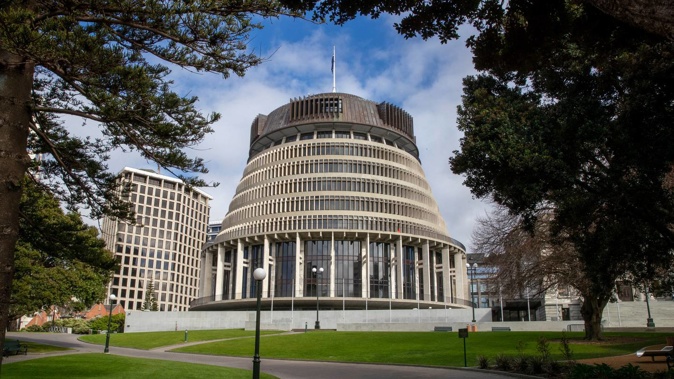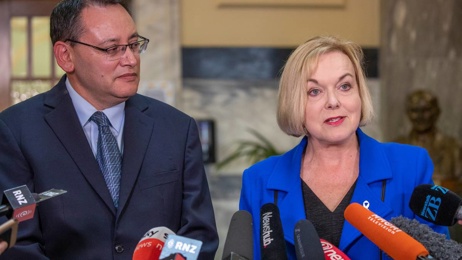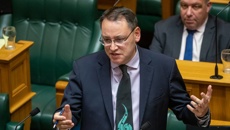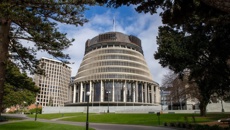
The election had more twists and turns than a Hollywood blockbuster.
Labour won the first outright majority in New Zealand's MMP history, winning 64 seats in the House of 120 MPs
Act increased its total number of MPs by 900 per cent; Chlöe Swarbrick turned Auckland Central Green and the Māori Party is back in Parliament, provincially.
But there are many other more fascinating facts:
1) How many electorates did Labour win the party vote in?
Labour won the party vote 68 of the 72 electorates in the country, meaning it lost the party vote in just four seats this election – a record high for Labour.
Those seats were:
Taranaki-King Country
Waikato
Tāmaki
Epsom
Labour won the party vote in every single South Island seat.
2) Which candidate had the highest majority?
Remutaka – Labour's candidate, senior Minister Chris Hipkins, won his electorate by the largest margin in the country.
He won 24,911 votes compared to his National rival's 7674 – that's a margin of 17,237.
Hipkins' margin was even bigger than that of Prime Minister Jacinda Ardern – who won by a margin of 16,577 in Mt Albert.
3) Which candidate had the smallest majority?
Whangārei – National's Shane Reti won it by just 164 votes. The margin would have most likely been a lot larger, if it wasn't for Act's David Seymour standing in the seat.
That's not Act leader, David Seymour – rather, a candidate with the same name.
It's likely that a number of Act voters got confused and gave the Act leader their candidate vote as well as their party vote.
4) Which candidate got the highest number of votes?
Chris Hipkins also wins in this category.
Of the 36, 331 votes cast in his Remutaka electorate, he won 24,911.
The second highest was Jacinda Ardern who won 23,198 votes. But her seat has 3744 fewer voters than Hipkins.
5) Which MP got the lowest number of votes?
In terms of candidates with the lowest total number of votes that got into Parliament, that crown goes to Act's Wellington Central candidate, and the party's deputy leader Brooke van Velden, who only received 678 votes.
But when it comes to which candidate got the lowest total vote – that goes to Prince Bhavik, who stood in Kaikōura for the Money Free party.
He won just 10 votes.
6) Which electorate had the biggest margin in the party vote?
Numerically, it was Taieri. Of the 39,182 votes cast, 23,210 were for Labour. That means there was a margin of 14,705.
In terms of the biggest margin represented as a percentage, the title goes to Māngere, where the margin was 65.5 per cent (15,818 Labour votes compared to 2134 for National.)
7) Which electorate had the lowest split?
Waikato – of the 34,658 votes cast, 13,472 were for National and 13,434 were for Labour – that's a margin of 38 – or just 0.1 per cent.
8) What were the top five Greenest seats?
Wellington Central – 11, 697 party votes
Rongotai – 8872
Dunedin – 7001
Mt Albert – 6503
Banks Peninsula – 6022
9) What were Act's top five seats?
Selwyn – 4717 party votes
Waitaki – 4555
Kaikōura – 4359
Southland – 4371
Rangitīkei – 4204
10) What were NZ First's top five seats
Northland – 2351 party votes
Whangārei – 2012
Te Tai Tokerau – 1583
Tauranga – 1406
Wairarapa – 1364
11) What was the most unpopular party in the election?
HeartlandNZ received the lowest total number of votes in the election, winning just 987 across the country – or 0.0414 per cent of the total vote.
In Auckland Central, Maungakiekie and Whanganui the party received no votes.
12) How many women are there now in Parliament?
There are now 57 women in New Zealand's Parliament, or 47 per cent of the 120 MPs in the House.
That number was significantly bolstered by the number of new women MPs coming into Parliament – 23 out of 40.
13) How many seats are there where a candidate is leading by fewer than 1000 votes?
Tāmaki Makaurau – 902 margin
Tukituki – 772
Northland – 729
Auckland Central – 492
Invercargill – 685
Maungakiekie – 580
Whangarei – 164
Waiariki – 415
14) How many members of the rainbow community are there in Parliament now?
With 11 MPs identifying as part of the LGBTQ+ community, New Zealand's Parliament is now the "queerest in the world."
15) How much will the special votes change the outcome?
The special votes will most likely give the left bloc in Parliament, Labour and the Greens, another couple of MPs.
This would likely mean National will lose at least one MP and the person at the bottom of their list is Maureen Pugh.
If this happens, it will mean that for the third time in a row, Maureen Pugh will lose her seat because of the special votes.
The other two elections she got back in after other National MPs resigned.
16) Which electorate received the most advanced votes?
The Bay of Plenty – it received 29,706 votes early. On Election Day, some 7,084 votes were cast meaning 80.7 per cent of votes cast in the Bay of Plenty were done early.
In fact, there was no a single electorate in the country where early voting was not under 55 per cent; the total nation-wide was 70 per cent.
17) Which party had the most advance votes?
The Green Party, of which 75.5 per cent were done early. Labour was next with 73.3 per cent, National was 67.1 per cent and Act was 66 per cent.
New Zealand First was the lowest, with just 62 per cent.
18) What was the most popular voting centre in New Zealand?
The Mall at 185 Main St in the Remutaka electorate was the polling centre which received the highest number of total votes.
All up, there were 10,898 votes lodged at the former T&T shop – 10,242 were advance and 656 were done on Election Day.
19) What was the least popular voting centre in New Zealand?
The NZ Bloodstock Centre, at 10 Hinau Rd at Port Waikato had the least number of votes cast out of any polling place in the country.
There were just 120 votes cast there – 107 were cast early and 13 on Election Day.
20) How many seats did National lose?
It depends on how you define the loss.
Compared to last election's 56, then its current 35 seats is 21 fewer.
It lost 15 electorate seats it previously held, 14 to Labour and one to the Greens (four MPs who lost electorate seats are back in on the list: Gerry Brownlee, David Bennett, Chris Bishop and Nick Smith); five National electorate MPs are out of Parliament, Harete Hipango in Whanganui, Jonathan Young in New Plymouth, Tim Macindoe in Hamilton West, Lawrence Yule in Tukituki and Dan Bidois in North Shore; seven sitting list MPs are out: Kanwaljiit Singh Bakshi, Paulo Garcia, Agnes Loheni, Alfred Ngaro, Brett Hudson, and Jo Hayes.
text by Jason Walls and Chris Knox, NZ Herald
Take your Radio, Podcasts and Music with you









